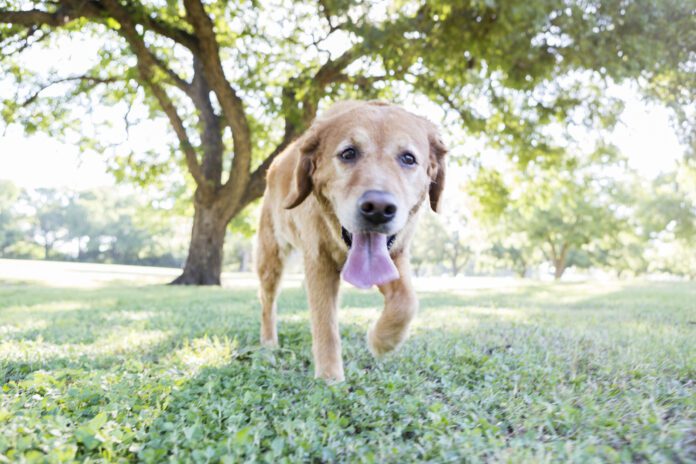Yes. Dogs sweat. Unfortunately, it’s an ineffective process, and you won’t see sweat dripping from their bodies when overheated, like a human or a horse does.
Dogs sweat through their paws, which have sweat glands on the pads. You might notice a damp set of pawprints if your dog has been sitting somewhere that makes him nervous or if he is very hot. But it’s not enough. Pads aren’t an effective way for your dog to cool off.
The most effective way for dogs to cool off is via panting. As your dog pants, the moisture from his tongue and mouth evaporates, helping to cool him. This panting is why plenty of fresh water is so important for your dog on hot days. He needs that liquid to keep his mouth moist and allow evaporative cooling. Watch how long and wide his tongue gets as he pants. The more surface area he has on his tongue, the more cooling power. If your dog’s tongue is long and wide, he’s too warm.
Along with panting, dogs will do some vasodilation on hot days, which means blood vessels open wider to allow more blood circulation near the surface of the skin. You might notice the inside of your dog’s ears are red, especially if he is short-haired and has prick ears. The bigger the ear, the more cooling power.
The groin area also gets more blood flow when your dog is hot, which is why it’s a good area for applying cool compresses or wet with a sponge if your dog is overheated. If possible, ask your overheated dog to wade into a lake or shallow pool, like a kiddie pool. Avoid wetting him with water that is overly cold, as it will cause blood vessels to constrict, which is counterproductive to cooling.
Fans or getting your dog somewhere with a cool breeze or in an air-conditioned environment will help to cool him off as well. The breeze increases the evaporation rate. Think about how you feel better even just fanning yourself when you are hot and sweaty.
So, yes, dogs do sweat but panting is their “chilling off” superpower!






